Here's everything you need to know about the Renault Twingo.
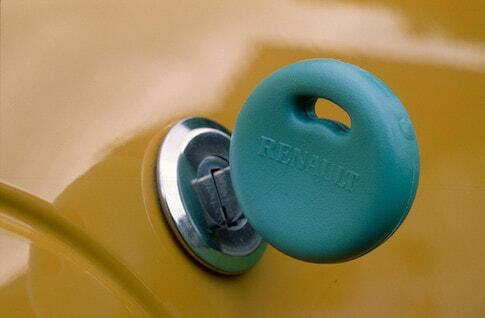
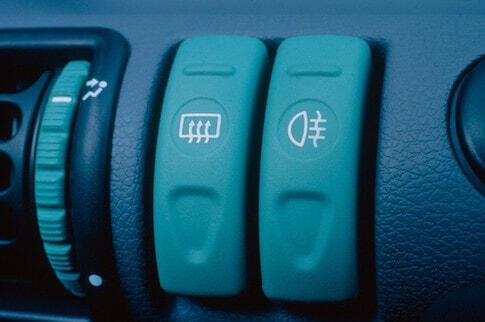
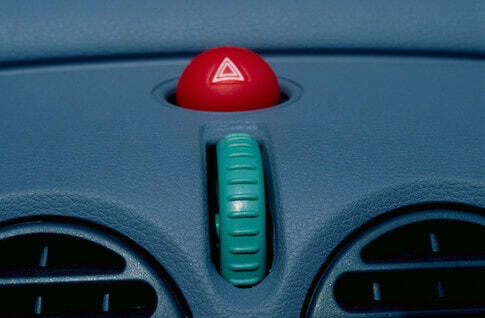

Quirks and Features – What makes the Twingo so special? Here's a quick rundown on the main features that made the Twingo one of the most popular small cars of it's time and a potential future classic.
Name – Twingo is a portmanteau of the words twist and tango.¹ The name can also be interpreted as a combination of the words twin and go, where the word "twin" refers to the idea of having two cars in one, a compact car and a minivan. This memorable name was coined by Manfred Gotta.
¹ In many places (such as on Wikipedia) it is said that the name comes from three words; twist, swing and tango. I'm quite sure this is incorrect. There is no swing in twingo. This is most likely a so-called canard. If I'm wrong on this, let me know.
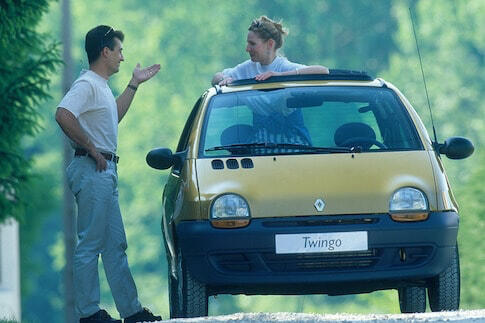
Affordability – The first generation Twingo was sold in France for FF 55,000. Everything in the Twingo was designed with cost in mind. A good example of Renault's attempts to reduce costs is the radio antenna housed on the side mirror. Why is it there? Because it saves on the length of the antenna cable. This "design-to-cost" strategy resulted in a lot of small unique quirks that made the Twingo like no other.
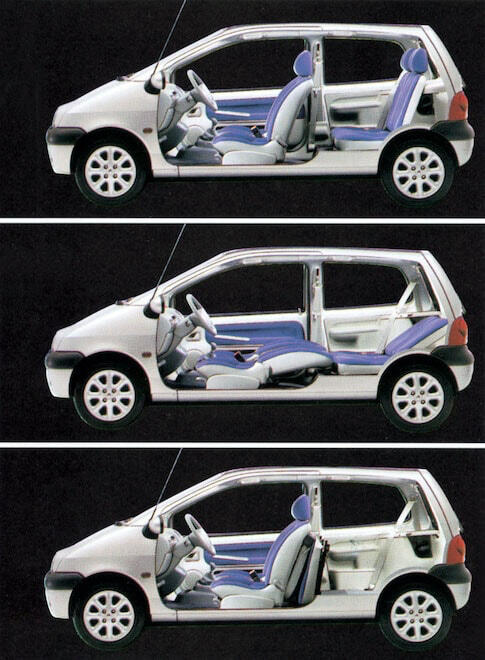
Packaging – When the Twingo launched in 1992, Patrick le Quément’s design was a masterclass in small car packaging. The car’s wheels were pushed as far to each corner as possible to maximize interior space, while oversized windows ensured the cabin remained light and airy. The ingenious sliding foldable rear seats were a feature that was never seen before in a car this size. Nowadays, many of these features pioneered by the Twingo are standard in every compact city car.
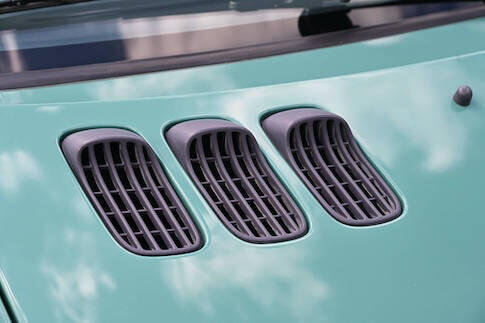
Economy – Not just affordable to buy, Renault’s small cars have historically been cheap to run. The first generation Twingo followed suit, with its technical simplicity, low weight and low fuel consumption. Many components were reused from Clio and other Renault cars, further reducing the cost of maintenance.
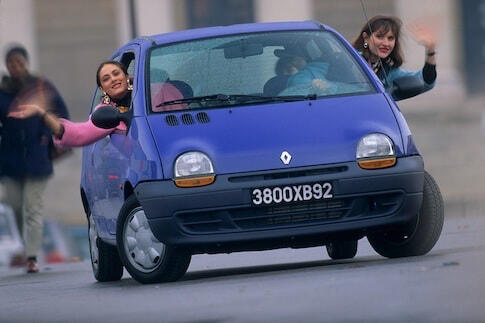
Ride – the Twingo had that famed cushy French ride. The suspension swallows almost everything that awaits on the French roads. It really is a surprisingly comfortable car. As this car was designed for the streets of Paris, the turning circle is only 9.7m. You can do a U-turn on a two lane street.
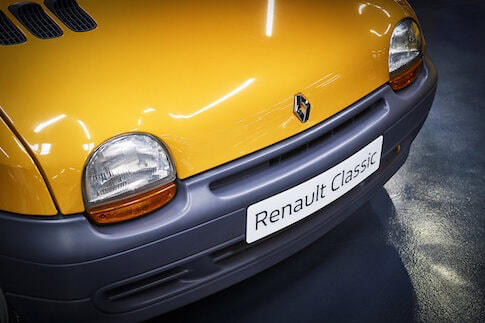
Style – What the Twingo lacked in equipment, it made up for in style. The exterior was utilitarian but playful, while the sparse interior was livened up by vibrant patterns and colourful switches and door handles. The Twingo is a perfect example of the expressive and playful design of the 90's.Especially with the current trend of angry and aggressive car design, the sight of Twingo's joyful smile reminds you that maybe the world isn't so bad after all.See also: Five decades of design, the 90's (YouTube)
TopGear 1993 Renault Twingo Test Drive (YouTube)
The Originals Renault Museum: Twingo
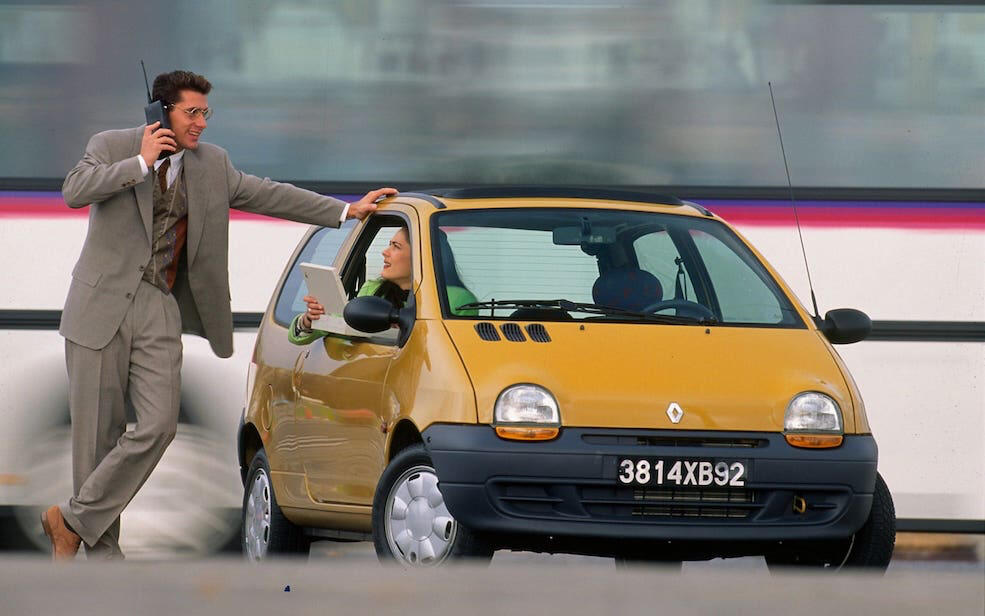
Timeline – Along the almost 20-year lifespan the Twingo never had an actual facelift, but instead it had multiple smaller under-the-hood updates and a couple of slightly larger visual updates called "phases". Here's a quick visual guide on what's changed over the years and how to recognize different Twingos.
1992
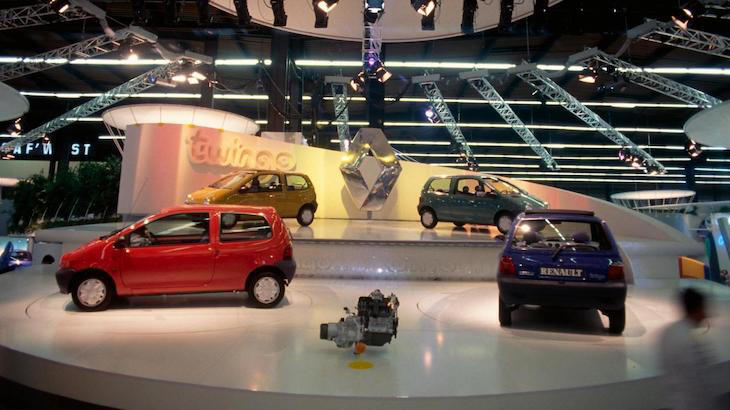
On 5th October 1992 the Twingo was unveiled at the 1992 Mondial de l’Automobile in Paris
1993 • Phase 1
Twingo launched in April 1993
At first Twingo was a very minimalistic car
Just a single model available with no airbags, no ABS, no central locking, no power windows, no power mirrors, no power steering, no AC, no automatic transmission
Just 790kg of pure cuteness
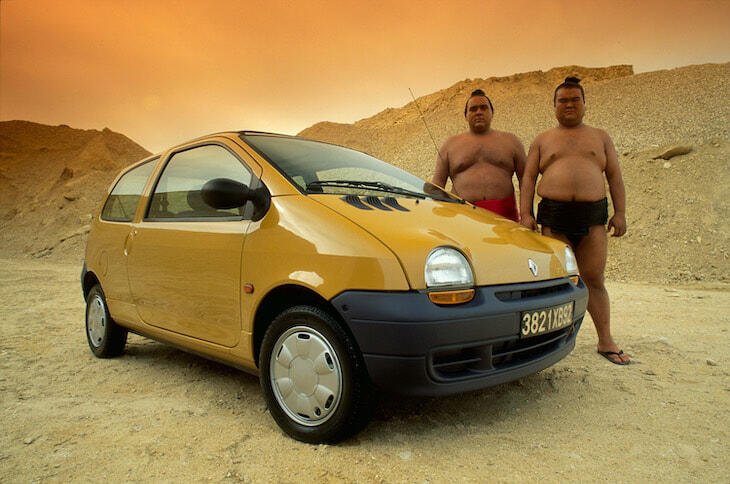
Orange blinkers

Unpainted bumpers
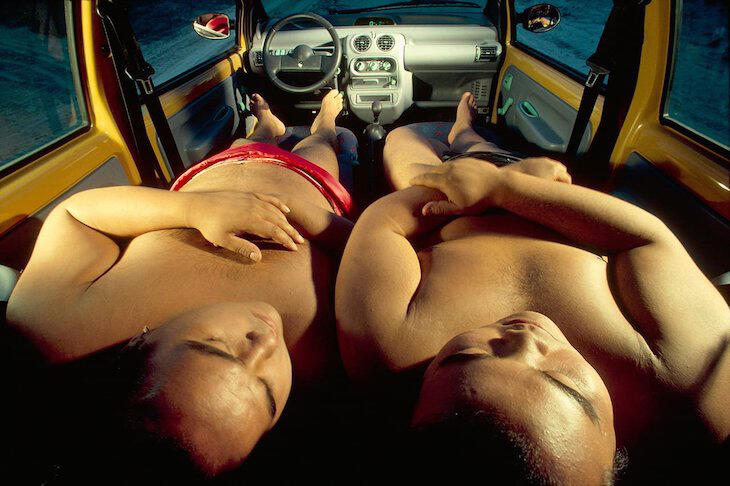
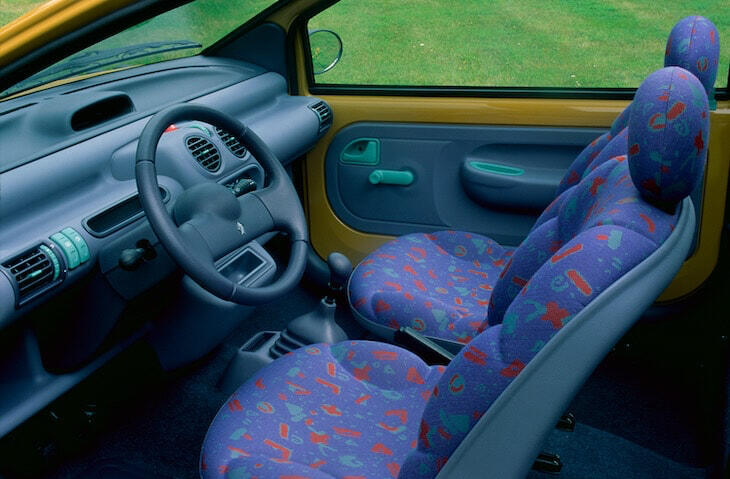
Two-spoke steering wheel
No adjustment lever for right wing mirror
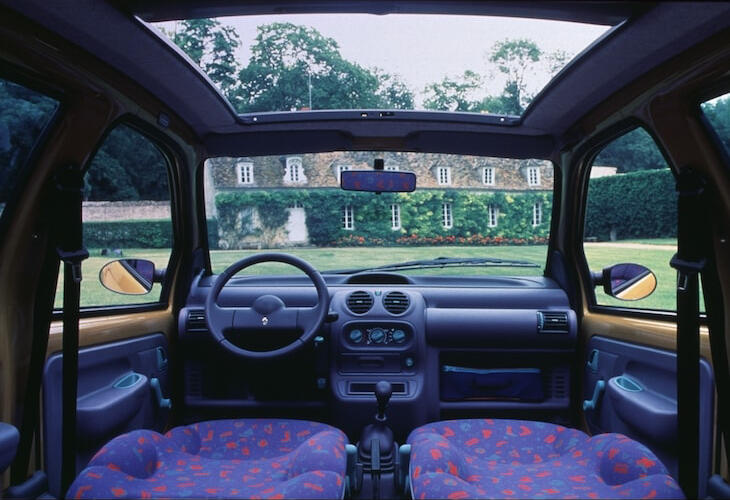
Interior light above driver's door
Tailgate openable only with a key
See also: 1993 Renault Twingo (YouTube)
In July 1993 first changes were made to the Twingo, including the addition of adjustment lever to passenger side mirror and better side-impact protection
1994
In June a range of new models were launched
Push-button added to tailgate
Interior light moved from above the driver's door to more central position between the sun visors
Twingo Easy transmission without a clutch pedal introduced
Renault started to offer a bunch of optional extras, such as "Pack Électrique" (power windows and mirrors, central locking), air conditioning, ABS
1995
Half a million Twingos produced
Driver and passenger airbags now available as an option
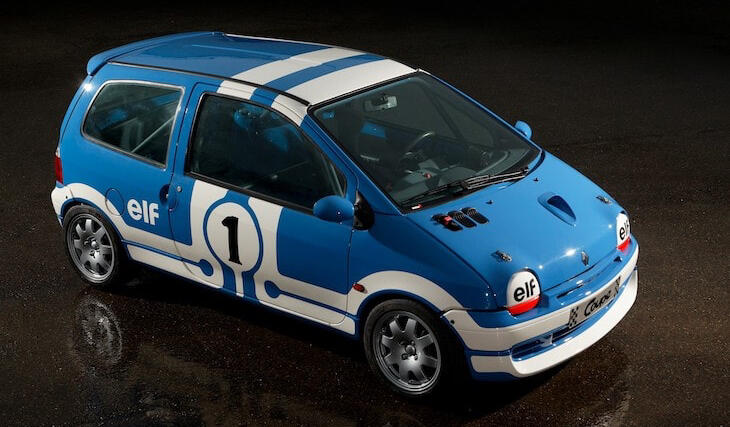
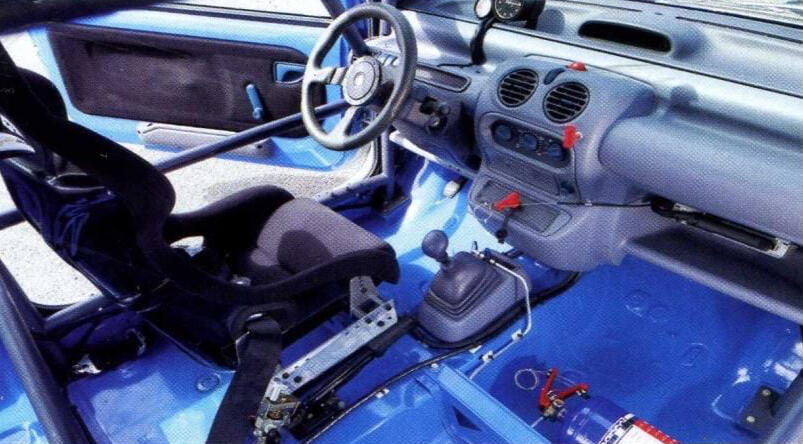
Twingo Coupe racing car unveiled. Prototypes were made with Renault F7P and F7R engines, producing 135hp and 150hp respectively. Sadly, it never raced.
1996
D7F engine was introduced and eventually it replaced the old C3G engine on all models
Third brake light added
Air recirculation added
Reinforcements for the car body
Interior was updated slightly
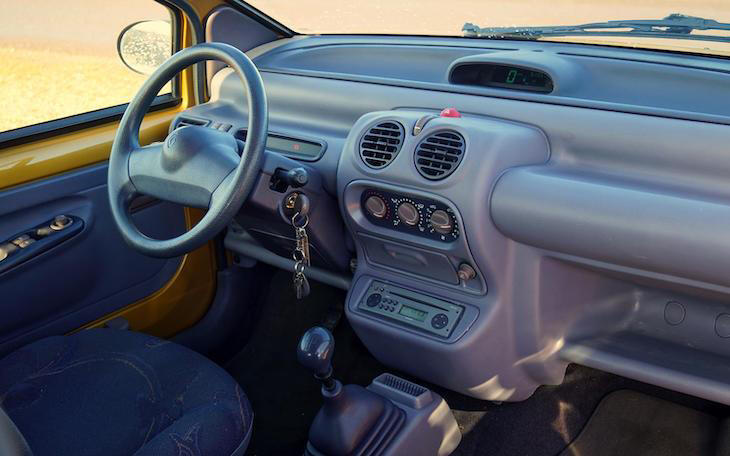
2-spoke steering wheel
Twingo'Matic with a 3-speed automatic introduced
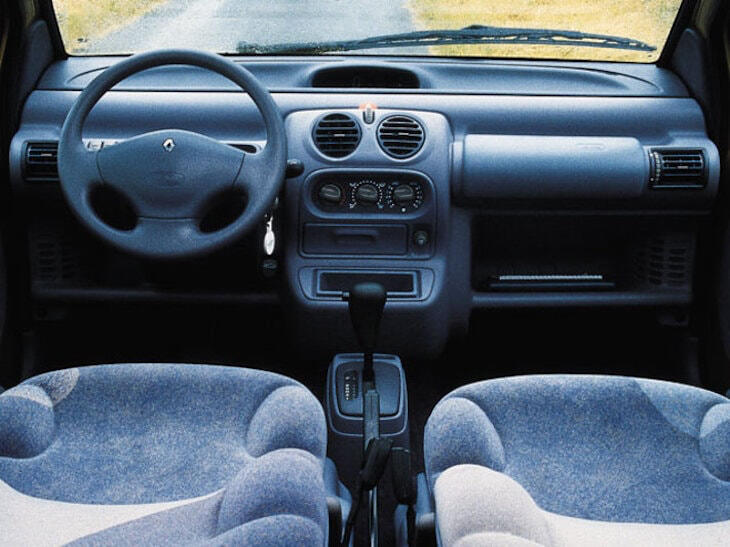
3-spoke steering wheel with driver airbag
See also: Renault Twingo User Manual (YouTube)
1997
1 million Twingos produced
1998 • Phase 2
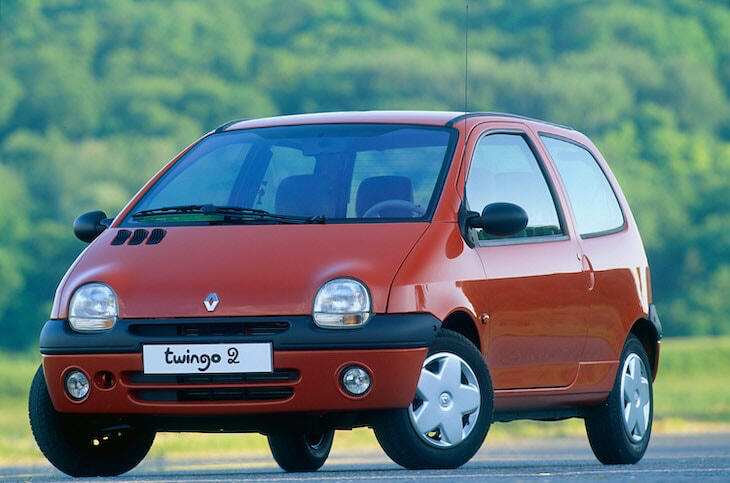
New body-color bumpers with a simpler design
Base models still had unpainted bumpers
Blinker and headlamp now integrated into one unit
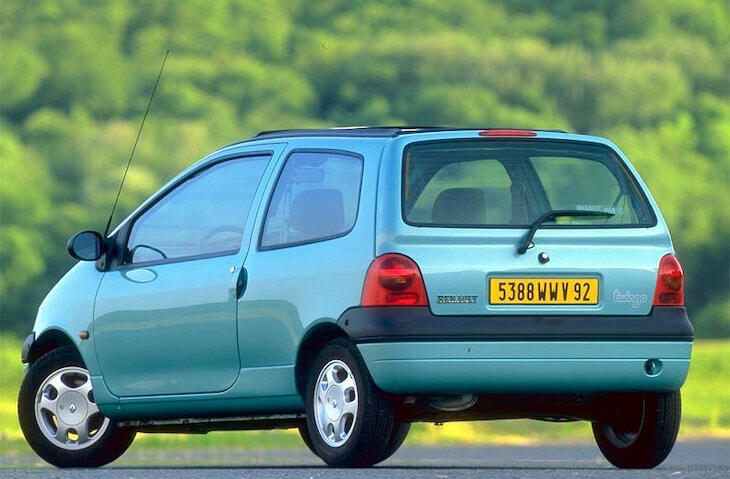
Updated tail lights
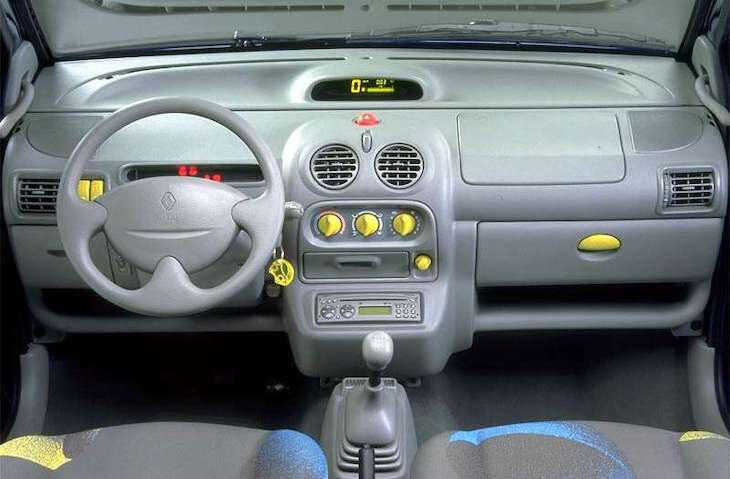
New interior, including a new 3-spoke steering wheel
Driver and passenger airbags now standard
Speakers moved from below the dashboard to the top of the dash
Proper glove box added
Models with AC continue not to have a glove box due to space constraints
Fuel level is now shown in lines instead of dots
Immobilizer added
EOBD (OBD-II) added
Reinforced body for crash safety
1999
Top of the line model "Initiale" launched
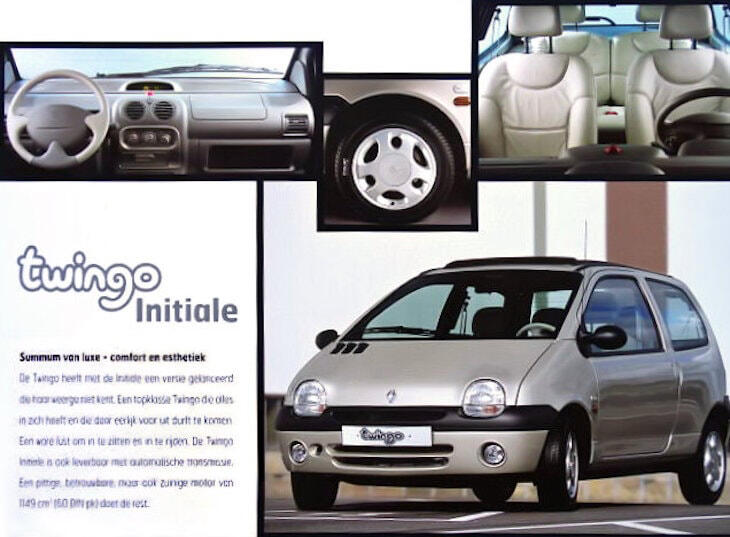
Most notably it had a leather upholstery
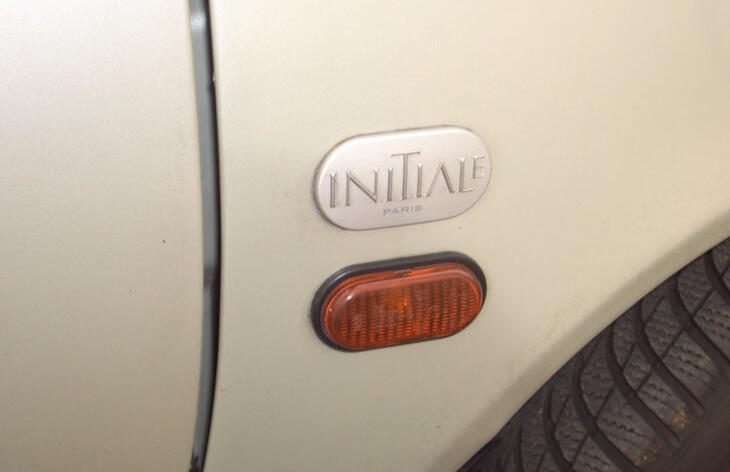
"Initiale" emblem above the side turn signal
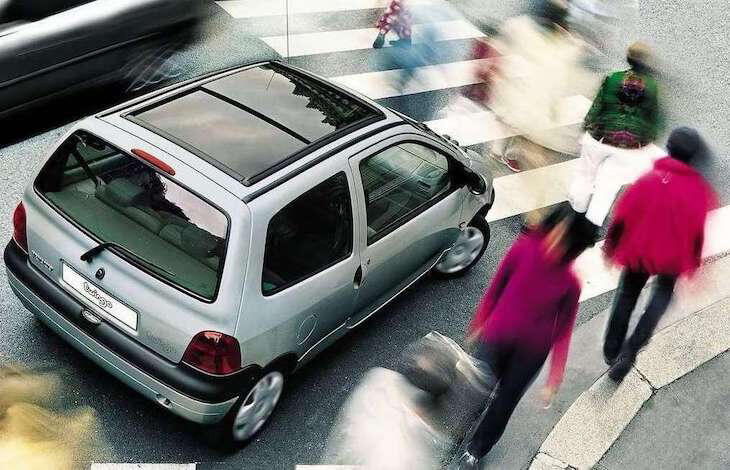
Panoramic glass sunroof available
2000 • Phase 3
13-inch wheels updated to 14-inch
Bigger brakes
ABS now standard
Electric windows now standard
Reinforced body
Front anti-roll bar added
Fully galvanized front subframe for better protection against rust
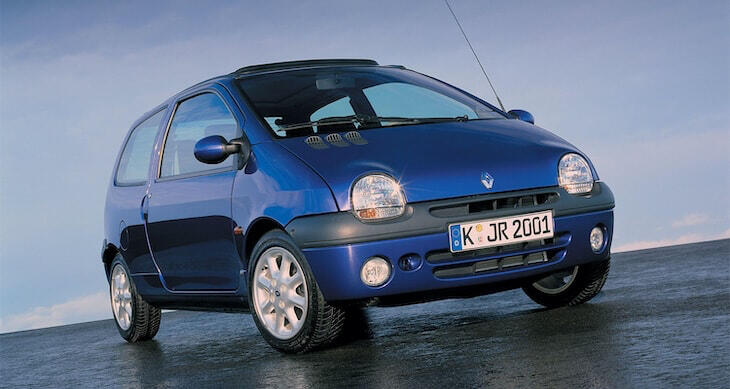
Headlights slightly updated with clearer design
Body-color side mirrors
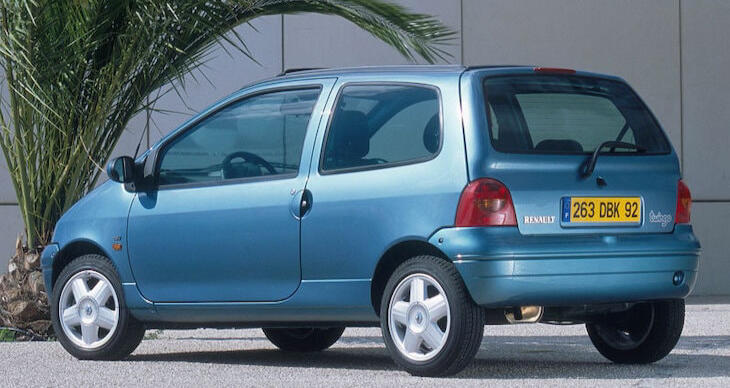
The boot lid has no keyhole anymore, just a black button to open it
Remote centralized door locking now standard, so you can lock and unlock the tailgate by using the key fob
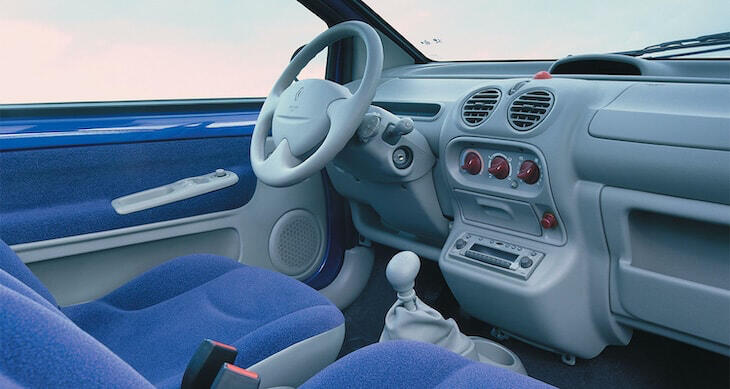
Speakers added to door panels
Tiny cupholders added in front of the gear lever
2001
Quickshift, a 5-speed sequential transmission introduced
More powerful D4F engine available
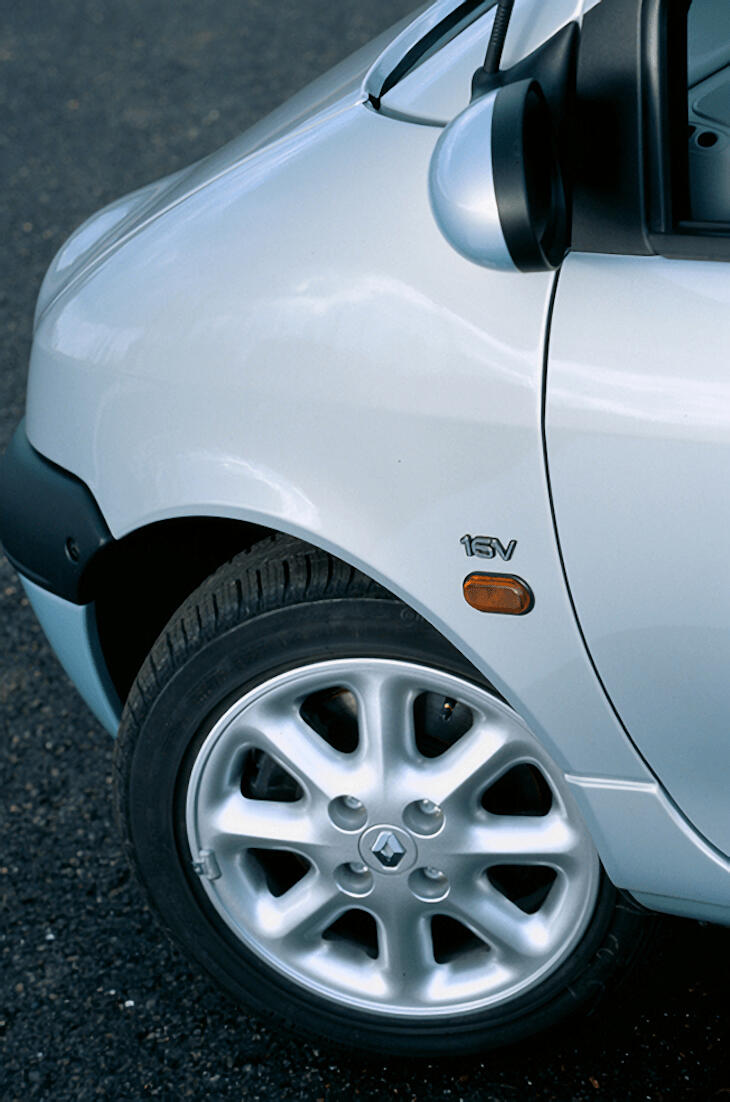
Models with D4F engine had a "16V" emblem above the side turn signal
2002
2 million Twingos produced
Side airbags as standard
ISOFIX added to rear seats
2003
Bigger brakes for better braking performance
EuroNCAP crash test results for the 2003 Twingo
See also: Euro NCAP | Renault Twingo | 2003 | Crash test (YouTube)
2004 • Phase 4
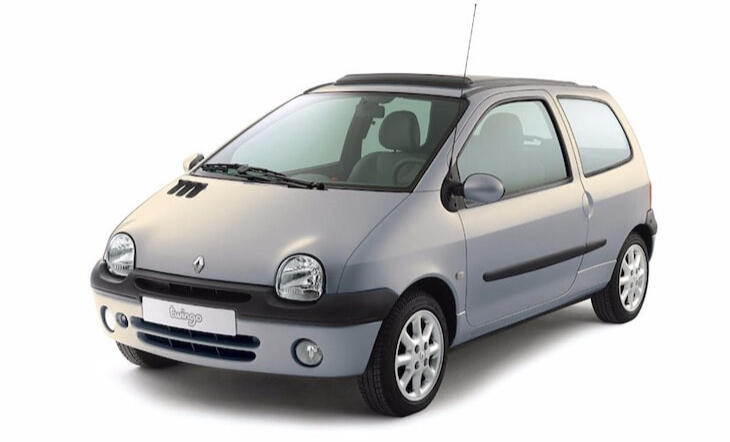
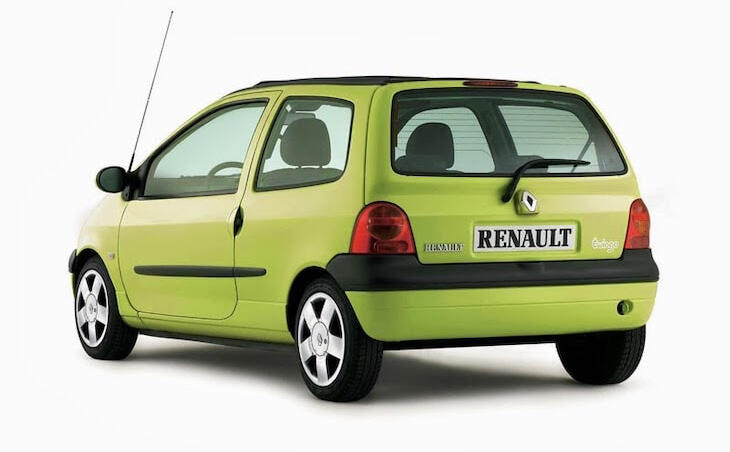
Renault emblem on the tailgate
Side rubbing strips added
Clear side turn signals
Over the years, due to reinforcing of the body and all the other added safety features, the Twingo has become a hefty boy with a weight up to 920kg depending on options
2007
Twingo II was launched in 2007, but the production of the first generation Twingo continued in Colombia for South American markets all the way to 2012
2012
The production of 1st gen Twingo has now fully ended
In total over 2.6 million units of were produced
In comparison: Original Beetle (21.5 million units), Citroën 2CV (9 million units), original Mini (5 million units), Trabant (3 million units)
2013
See also: Twingo 20 years: How the "petite" Renault was conceived (YouTube)
2014
Twingo III entered into production
2019
This website was created to commemorate the colorful history of the first generation Renault Twingo
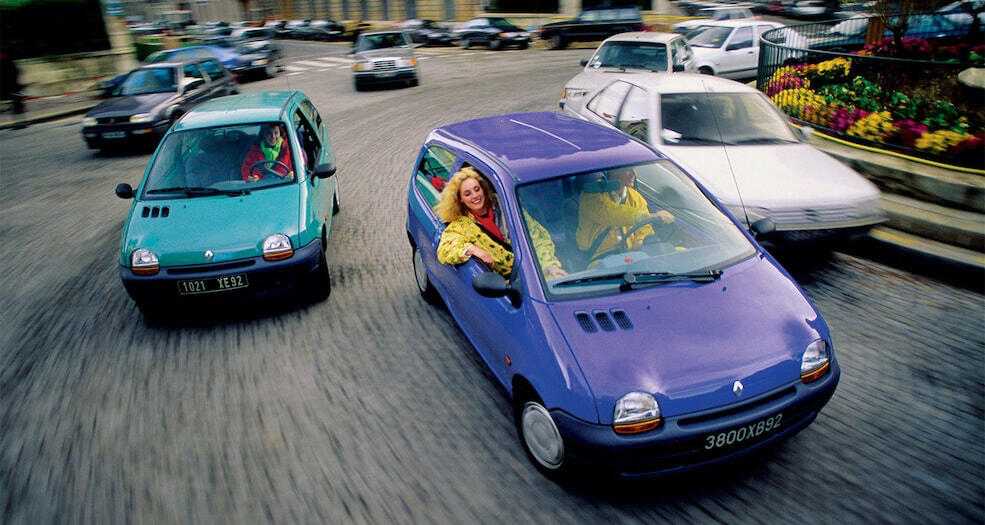
Engines – Over the years the Twingo had three different (but equally low-powered) engines available. The engine bay was super tiny, so the engine had to be tiny too. A 1.2 liter naturally aspirated four-cylinder was the most compact and economical solution back then.
In addition to the gasoline engines mentioned below, there was also a LPG bi-fuel variant of the D7F engine available, and for South American markets Renault developed smaller D7D and D4D engines, as the local regulations favored 1.0 liter engines there.
C3G • 1993 – 1997
1239cc 8V 55hp
Old and bulletproof design from the 60s
Pushrods
Timing chain
D7F • 1996 –
1149cc 8V 60hp
More modern, fuel efficient and quieter
D4F • 2001 –
1149cc 16V 75hp
Newest and the most powerful engine available for the Twingo
Drive-by-wire (with awful throttle lag)
In 2004 a 60hp variant was introduced
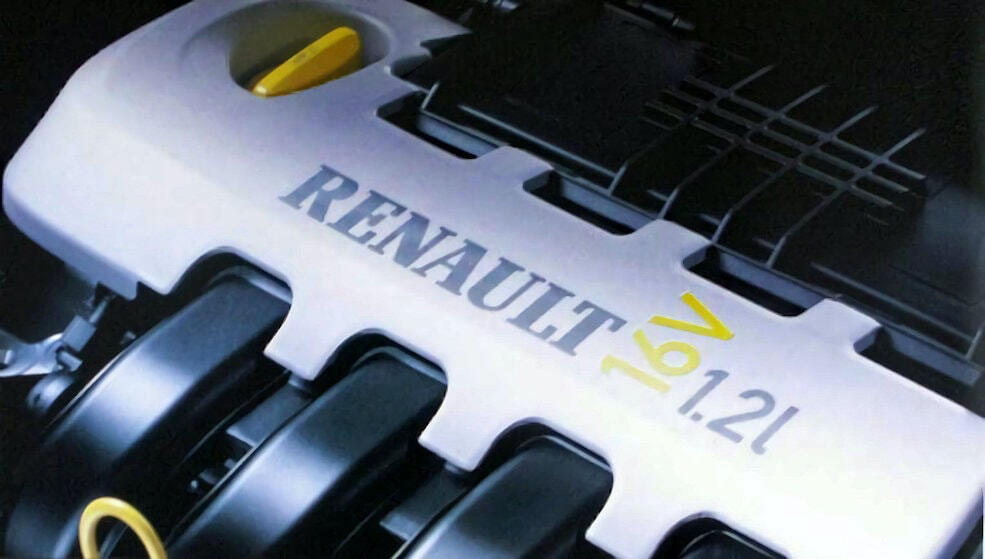
Transmissions – Vast majority of Twingos were sold with a 5-speed manual transmission, but there were also all kinds of quirky automatics available.
Easy • 1994 – 2000
5-speed semi-automatic transmission
It had a manual gear lever but no clutch pedal
You still change gears like in a manual, but the car controls the clutch
Similar to Saab Sensonic
The hydraulic clutch actuator is prone to fail
'Matic • 1996 – 2000
Traditional 3-speed automatic with torque converter
Quickshift • 2001 –
5-speed semi-automatic transmission
Essentially a normal gearbox with a normal clutch, but the car controlled the clutch and the gear changes
It had a manual mode too with +/- gearshifts
The clutch wear on this transmission is quite significant
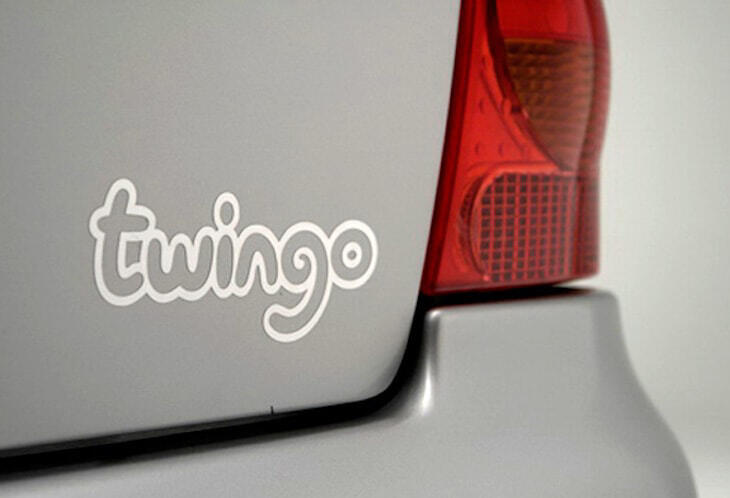
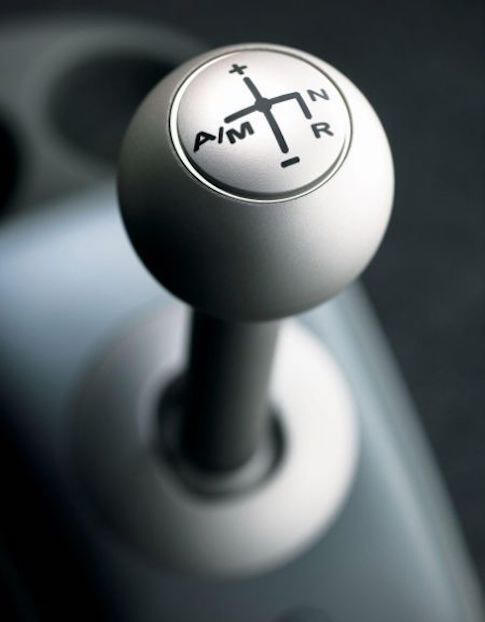
More info – Now you should know everything you need to know about the first generation Renault Twingo, but if you want to learn even more, here's some links for more reading.Most of the info on this site is collected from these sources mentioned below and from all kinds of blogs and old articles around the internet. I've tried to cross-reference multiple sources when available to gather the most correct information.Sadly, websites die, entire forums full of valuable information disappear. I have a bunch of bookmarks about Twingo I saved over the years that don't work anymore. There's not much left of the 90s/early 00s internet, which is why I wanted to create this site. I wanted to gather all the interesting bits of Twingo in one place and in English so everyone can learn about this French gem of the 90s. I'm quite sure this car will become a collector's item in the future. An early model Twingo is definitely a great investment right now. I hope this site will inspire more people to see the value in this car and take better care of them.
Génération Twingo – French Twingo community with lots of info
Forum-Auto – French Twingo forum
Caradisiac – French car site with information and articles about Twingo
twingotuningforum.de – German Twingo forum
Motor Talk – German Twingo forum
Wayback Machine: Twingo
Archive.is: Twingo
All images on this site are copyright to their respective owners.
High-resolution versions can be found here: Imgur gallery
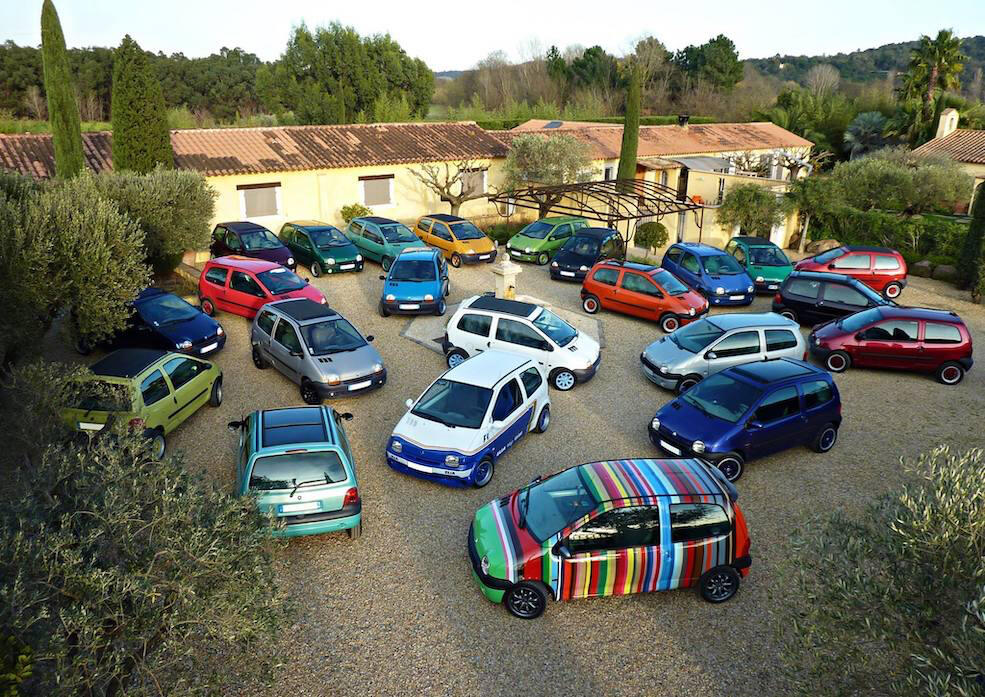
Contact – Anything to add? Questions? Feel free to contact me using the form below.
This form is protected by reCAPTCHA and the Google Privacy Policy and Terms of Service apply.

v1.3